At Theorem, we have big ambitions for 2023. We’re aiming to enhance our platform, expand support, boost adoption, and collaborate with partners across the industry to provide top-tier post-trade processing and top-notch service for our clients. Allow us to lift the curtain and tell you what our team believes the future holds for Theorem, the industry, and our customers.

A Year of Innovation
Last year marked the fifth anniversary of Theorem. The billions of trades we have moved, matched, or reported on since our inception are not only a victory lap for us and our peers but also a reflection of the financial industry’s wider acceptance and adoption of Cloud-based solutions. We are thrilled to be a part of an adolescent, if not mature, community of SaaS and OaaS providers that can onboard new managers, investors, products, and accounts faster than ever before and without the hassle of on-premises and legacy systems.
For me, innovation is now about what can be done rather than where or who does it. What I’m most excited about in 2023 is introducing a new class of financial innovations. For Theorem’s customers and users, utterly amazing new features and products are in the works:
- New tools to integrate Market, Operational, and Counterparty Risk into a single elegant reporting dashboard
- Normalize new sources of financial data with one click and one minute
- API Access for the entire post-trade lifecycle
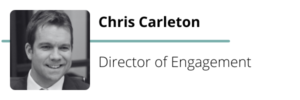
Expanding Support through Asset Class Expansion
While Theorem’s roots are in listed derivatives, we’re excited to learn about the complexities of other products’ post-trade lifecycles and have already started looking at Cleared OTC data, such as Interest Rate Swaps (IRS), Credit Default Swaps (CDS), and Equities. While full-fledged support is being planned, we do know that the initial emphasis will be on using Theorem’s Matching Solution to reconcile intraday trade activity and positional data on a T+1 basis. We’re also investigating methods to create reporting that intelligently captures and presents relevant data.
We serve as a central point for clients trading exchange-traded derivatives (ETD) with multiple FCMs because of Theorem’s ability to aggregate, normalize, reconcile, and deliver our clients’ data. We recognize, however, that siloed processes (and providers) by product are not feasible for many clients, and when they are, they create overlapping and inefficient processes that are difficult to manage internally, particularly by teams supporting a firm’s overall operation. By expanding our product support, we hope to simplify our clients’ post-trade processing and data management. If your company is interested in becoming an early partner, please contact us!
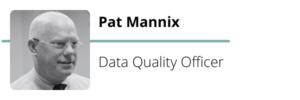
Measuring Data Delivery and Enhancing Buy-Side Management with Outsourced Operations
At our core, Theorem is a data processor, which means that we collect data from a source (exchanges, trading platforms, executing or clearing counterparties, or clients themselves), normalize, aggregate, or structure it, and transmit it, allowing participants to complete mission-critical processes and have the information they require on hand. To carry out that mission, we rely on partners – Theorem cannot provide its services without timely data delivery from executing and clearing counterparties. So, we’ve built tools to help measure data delivery statistics over time to hold both Theorem and our partners accountable. Today, we’re reevaluating how we share this information, while maintaining anonymity and trust with our partners. We believe this will not only improve timeliness but also allow market participants to identify when a link in the data chain is broken and needs to be repaired.
Additionally, while data delivery is an important part of clearing broker services, it is not their main product. Rather, they are in the business of facilitating market access, performing due diligence on both market participants and risk management strategies, and providing guarantees of ongoing risk management in the form of capital commitments to Clearinghouses. We agree that clearing broker’s focus on those responsibilities is critical, and it’ll continue to be our job to present information (via aggregation and normalization) in the most understandable way to clients.
Lastly, for nearly two years, Theorem has been in the business of outsourced operations, and in 2022, we provided our clients with advisory services in addition to recurring partial headcount support. In 2023, we’ll take it a step further by assisting buy-side managers with broker performance reviews, new broker selection, and migration management, utilizing the software tools at our disposal – including trade, position, and balance matching – to ensure that transfers are seamless.
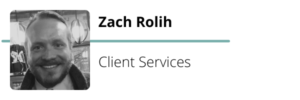
Forecasting Support Trends to Provide Enhanced Automation
Our support team at Theorem is always on the lookout for trends, whether they are user-behavior or communication-related. We believe that these trends will help us determine where to focus our enhancement and automation efforts. In 2023, we’ll double down and implement systems that enable the collection of analytical data, allowing us to remove subjectivity from our reviews and provide best-in-class support.
Users spend the most time in our workflow tools, which is understandable given that they actively use Theorem’s allocation capability to structure executed activity, apply splits (at average price, fill level, or best fit), and initiate transmission of a structured allocation instruction to executing brokers to process. Our Matching tool is then used by clients to ensure that the clearing broker’s representation of trade activity matches their instructions or even their own books. While some users prefer to have normalized and aggregated reporting delivered via email or SFTP, others prefer to review data on screen or generate the reporting they require when they need it.
In terms of communication, we are currently structuring support to provide data on the most frequently corresponded-on subjects. We anticipate that most of our team’s correspondence will focus on allocation instruction and trade break investigation, similar to module usage – but as more specific data becomes available, we’ll be in touch with ideas on proactively resolving issues that drive communication between Theorem, its clients, and their executing and clearing counterparties. The goal is to provide our clients with the best tools possible while also improving the customer experience where they spend the most time.
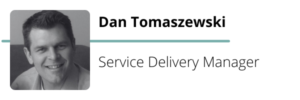
Scaling Theorem’s Core Systems for Increased Product Support and Innovation
With increased product support and innovation comes the need to ensure that core systems can scale appropriately while maintaining consistent service levels. We’re looking at it from both vertical and horizontal perspectives. To begin, we are ensuring that existing processes that will continue to apply to new products are as efficient as possible, and that existing hardware and resources are properly utilized. Second, we’re planning to ensure that the throughput of Theorem’s reimagined application can easily handle the highest volume days by allocating additional hardware to our resource pool.
We’re also thinking about security, such as how broker data is fed into Theorem’s application and how users interact with Theorem now and in the future. This entails maintaining high standards and giving clients options for how they want to interact with the system, ranging from 2-factor to verification. This is all in addition to our rigorous standards – including penetration testing, BCP, and DR fallback testing and assessment.
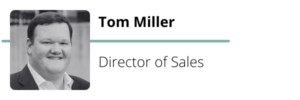
Theorem’s Tools, Advisory Services, and Industry Collaboration in 2023
While we’ve been focusing on increasing Theorem’s tool adoption in 2022 and 2023, we’re also excited to collaborate with the industry to simplify processes and hold each other accountable. One of the most difficult challenges in capital markets, particularly in the listed derivative space, is developing a common syntax. Collaboration with the industry on difficult problems like allocation and give-up processing, we believe, will not only help to develop practical and equitable solutions, but will also bring common syntax and an understanding of perspectives ranging from vendor to FCM, CCP, manager, and investor.
We’re also exploring collaborations that will bring together different technology stacks in the market to create a more cohesive solution. The concept of trades flowing from a trading screen vendor to a reconciliation provider, who is also gathering data from a manager’s clearing broker, and then being matched and fed into a record-keeping ledger, should not imply that the purchaser must navigate complex offerings to understand how solutions interoperate. We’re excited to work with firms from across the listed derivative ecosystem to develop a more comprehensive and easy-to-implement solution that will result in a better client experience and the ability to manage operational processes and risk.
In conclusion, Theorem is committed to continuously improving the customer experience and streamlining processes through collaboration across the listed derivative space. We understand that the future of capital markets relies upon our continued engagement and focus on data integrity, and are proud to be playing a part in building a more efficient and reliable system.
